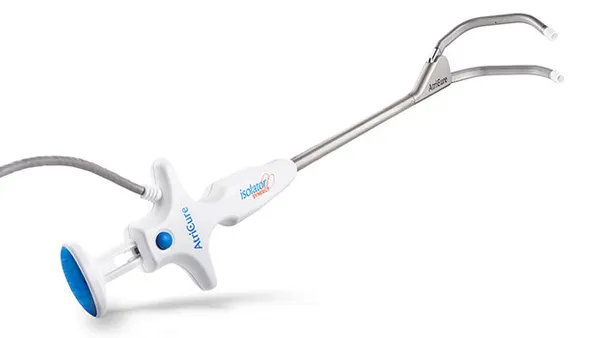Innovation in MedTech is surging, with AI-powered devices and digital therapeutics redefining what’s possible. But as technology evolves, so do the challenges of clinical development. Developers must now navigate complex regulatory landscapes, justify value to payers, and manage costs while ensuring their devices meet high standards for safety and performance.
“Advanced wearables and AI-driven tools won’t reach patients unless trials are designed to meet both regulatory and reimbursement expectations,” says Lisa Beck, BSN, M.S., Senior Director of Clinical Affairs at MCRA, an IQVIA business. “Developers must design trials that are lean, data-driven, and strategically aligned with both regulatory and market needs.”
Optimizing trial design is critical to success. A robust and strategic trial design helps manage the risk of costly delays or regulatory challenges later and may even help accelerate time-to-market.
Here, we’ll discuss three strategies for MedTech companies to design streamlined, effective trials and how quality data powers smarter study design.
Biostatistics in trial planning
A successful trial design depends on early alignment among stakeholders and a wide range of insights, from subject matter expertise to strategic planning. Beck recommends a core team of five: the principal investigator (your subject matter expert) as well as experts in biostatistics, reimbursement, regulatory affairs, and clinical operations.
Among these, the biostatistician plays a particularly critical role in laying the groundwork for a successful trial.
Biostatisticians help define endpoints, minimize bias, and calculate sample sizes to help ensure the study is powered appropriately. In studies of diagnostic and monitoring devices, for example, companies must demonstrate that their ability to identify medical conditions and events (as quantified by sensitivity) while avoiding false positives (as quantified by specificity or the false detection rate) is robust enough to avoid serious clinical consequences.
“For all medical devices, there is a balance in risk and benefit. In diagnostics, that balance might be captured in sensitivity and specificity,” said Chava Zibman, Ph.D., Principal Statistician at MCRA, an IQVIA business. “A sponsor’s rigor in quantifying and justifying the risk-benefit profile of their product can mean the difference between regulatory approval and delay.”
Biostatisticians also help shape inclusion and exclusion criteria, forecast attrition, and set benchmarks to monitor trial feasibility. Early involvement from biostatisticians helps sponsors avoid pitfalls by aligning statistical rigor with clinical and regulatory goals from the start.
Leverage valuable insights from pilot studies
Pilot studies are a powerful tool for refining trial design and reducing uncertainty before committing to a full-scale pivotal trial. They offer a low-cost, low-risk opportunity to evaluate device performance, validate endpoints, and test operational feasibility.
“Conducting a pilot study helps you understand device performance before launching pivotal trials, as sponsors must demonstrate performance above regulatory thresholds,” explains Zibman, Ph.D. “Pilot studies help you assess the strengths and potential pitfalls of your device. If you’re not reaching regulatory thresholds, you can adapt the device accordingly before investing in a clinical trial.”
Pilot studies also allow developers to test and refine trial protocols, ensuring they are optimized to demonstrate the device’s intended function. This is especially important as device complexity increases.
“Increased technological complexity in devices does not always require more complex study designs. Complex study designs are often driven by the extent to which a device performs multiple functions or modifies the standard of care” says Zibman. “Pilot studies can help you find opportunities to simplify study design while still meeting regulatory expectations.”
In addition, pilot studies can uncover operational challenges, such as recruitment barriers or data collection issues, that may impact trial feasibility. Addressing these early helps sponsors streamline pivotal trials and improve the likelihood of regulatory success.
Select achievable endpoints
The endpoints you select make or break the success of the trial. It’s critical to select endpoints that are clinically meaningful, feasible to measure, and aligned with regulatory expectations.
To identify the right endpoints, sponsors should analyze prior studies and regulatory decisions to understand what has been accepted historically and how expectations may be evolving. For example, recent trends show increased adoption of standardized endpoints, such as those defined by valve consortia in cardiovascular studies, which can help ensure consistency and comparability across trials.
Medtech developers should also consider incorporating patient-reported outcomes (PROs) and quality-of-life measures, while recognizing their limitations as standalone endpoints.
“PROs prompt patients to truly reflect on how they feel at a given point and time, which is important to measure the real-world impact of a device but may not encompass their overall condition,” says Beck. “That’s why sponsors should seek FDA agreement upfront on the use of PROs, and use them in combination with other clinical measures of success.”
Quality data: The key to effective trial design
As medical devices grow more sophisticated, so must the trials that validate them. Data quality has become increasingly pivotal to a program’s ultimate success. Access to quality data helps lay the foundation for success, from helping sponsors set appropriate inclusion and exclusion criteria, to allowing them to ‘scenario-map’ multiple trial designs, to selecting endpoints that can stand up to regulator and payor scrutiny.
“Strong data quality powers smarter trial design from the outset, helping sponsors plan trials that generate reliable, actionable insights the first time,” says Beck. “This not only helps accelerate timelines, but it also helps sponsors deliver on what matters most: bringing innovative, life-changing devices to the patients who need them most.”










